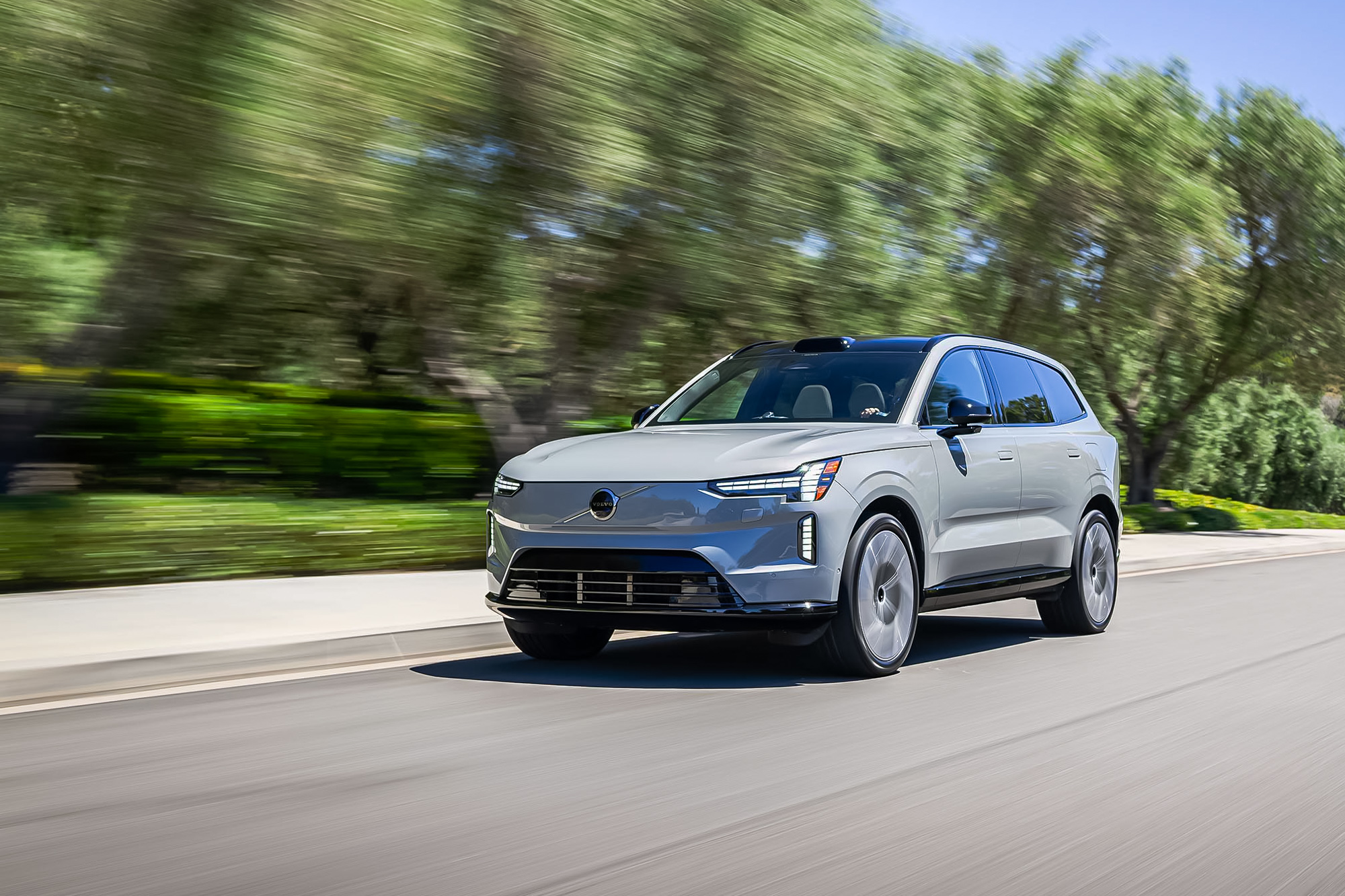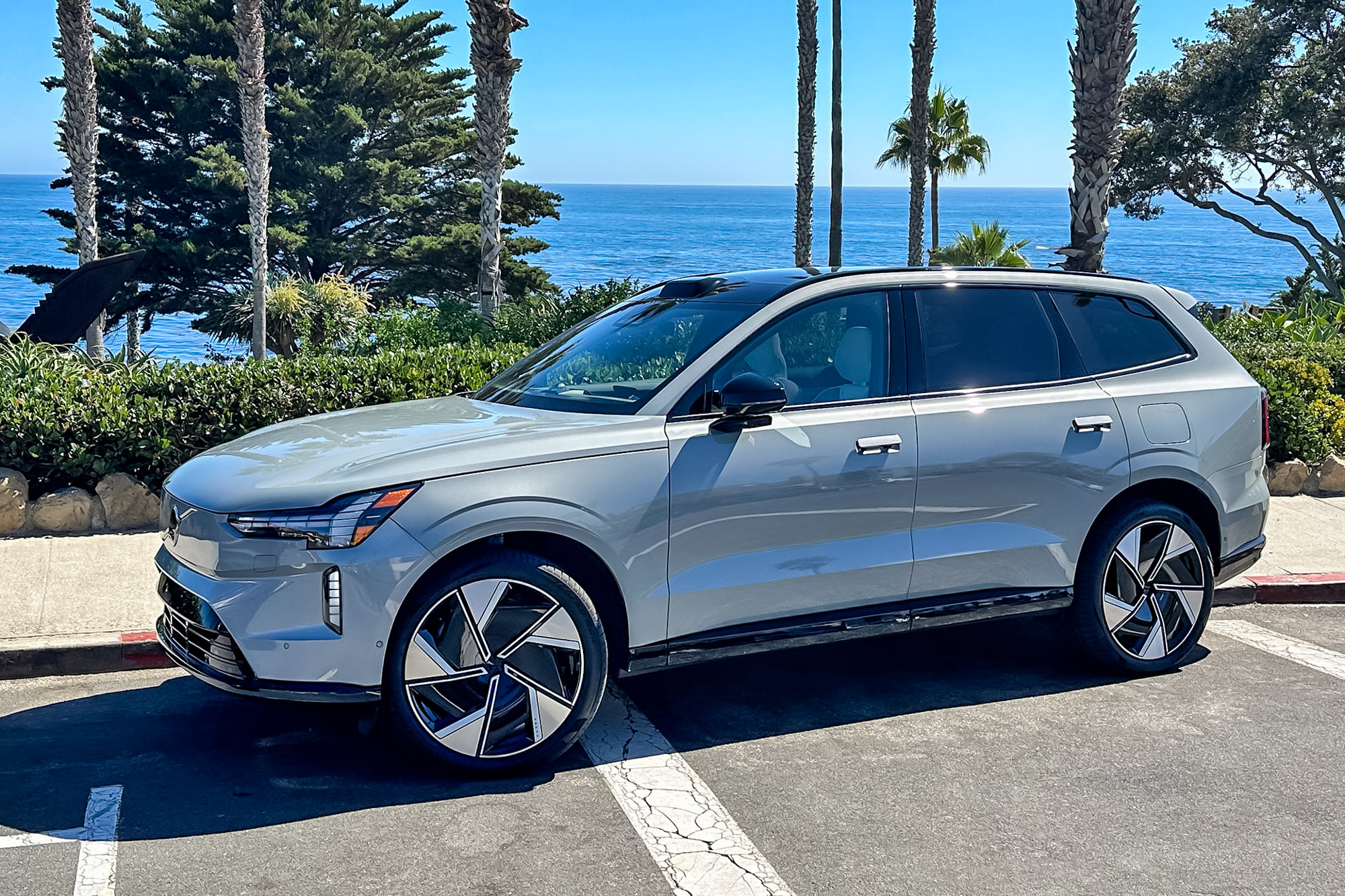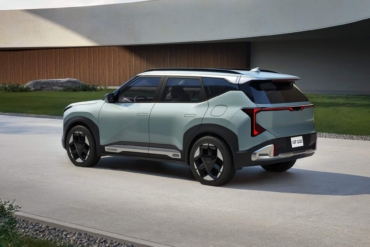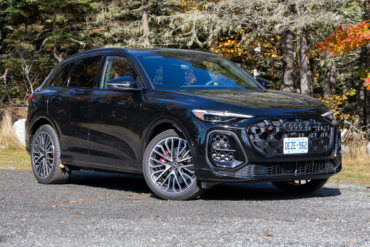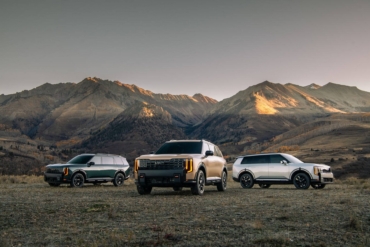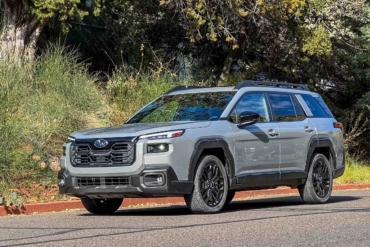The 2025 Volvo EX90 is set to become the brand’s all-electric flagship, ushering in what the automaker describes as a “new era” that will, sometime around decade’s end, see it shift completely to battery-electric vehicles.
To get a better sense of what direction the Swedish-based, Chinese-owned automaker is taking, I spent a couple of days along the Southern California coast checking out the top-line 2025 Volvo EX90 Twin Motor with Performance Package.
In short: The 2025 Volvo EX90 marks the start of a dramatic transformation with style, comfort, and all the safety features you’d expect from the Swedish automaker. There are a few quirky features, and it’s certainly not cheap, but it’s the right product for those who want an upscale battery-electric vehicle carrying the brand’s familiar “Iron Mark” badge.
- Powertrain: Twin electric motors, one on each axle, AWD
- HP/Torque: 517 hp/617 lb.-ft. (regular Twin Motor version makes 408 hp/568 lb.-ft.)
- Transmission: Single-speed
- Battery pack: 111kWh lithium-ion; useful energy: 107 kWh
- Range: EPA est. 308 miles, both twin-motor packages
- Charging: 10-80% 250kW DC charger,est. 30 min., 10-80% 50kW DC charger, est. 92 min., 0-100% 240V AC @ 48 amps, est. 10 hrs., 0-100% 240V AC @ 32 amps, est. 15 hrs.
- Towing: TBA
Pros
- Peppy engine delivers plenty of instant torque
- Cabin is quiet as a tomb
- Solid range, especially for the single-motor package
- Bidirectional battery can power home, work, or campsite
Cons
- Goofy window controls for driver
- Prefer conventional mirror and steering wheel controls
- Expensive, especially twin-motor premium package
- Doesn’t deliver as much interior space as one might expect
2025 Volvo EX90 Review
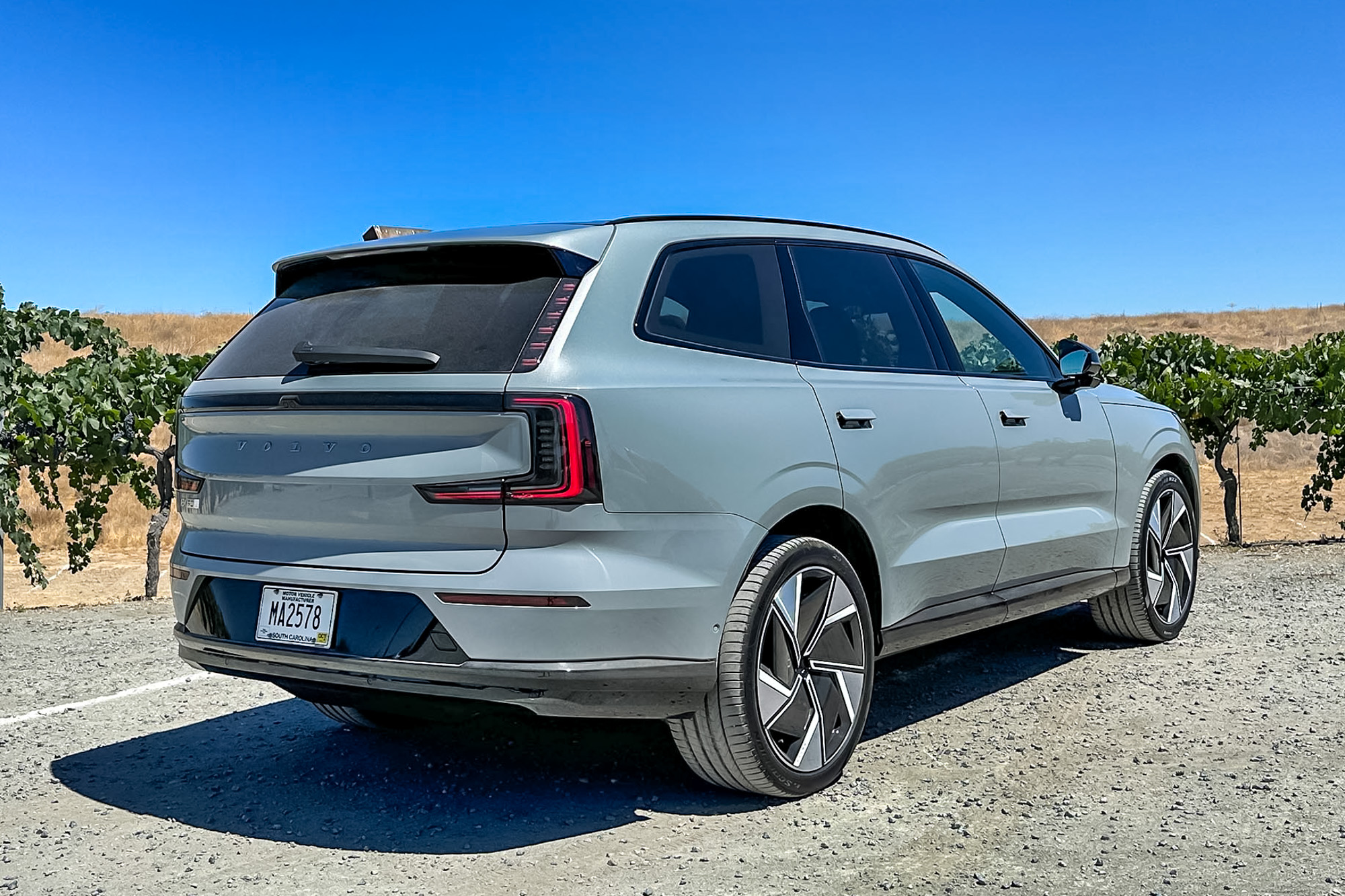
According to CEO Jim Rowan, “The Volvo EX90 is a statement for where we are, and where we are going.” Though Rowan has hinted that Volvo may keep some hybrids — and, more likely, plug-in hybrids — in the lineup past decade’s end, he continues to target a transition to an all-electric lineup.
The automaker has had several models, initially referred to as the “Recharge” line. It started out with internal combustion technology and then modified for all-electric applications. That requires compromises that Volvo avoids with the skateboard platforms used in EX models. The EX90 uses what’s called the SPA2 architecture, a skateboard-like layout moving batteries, motors, and other components under a load floor.
That flat floor is a definite plus, especially if you’re stuck in the middle of the second or third row — the EX90 is offered in either seven- or eight-passenger configurations.
2025 EX90: By the Numbers
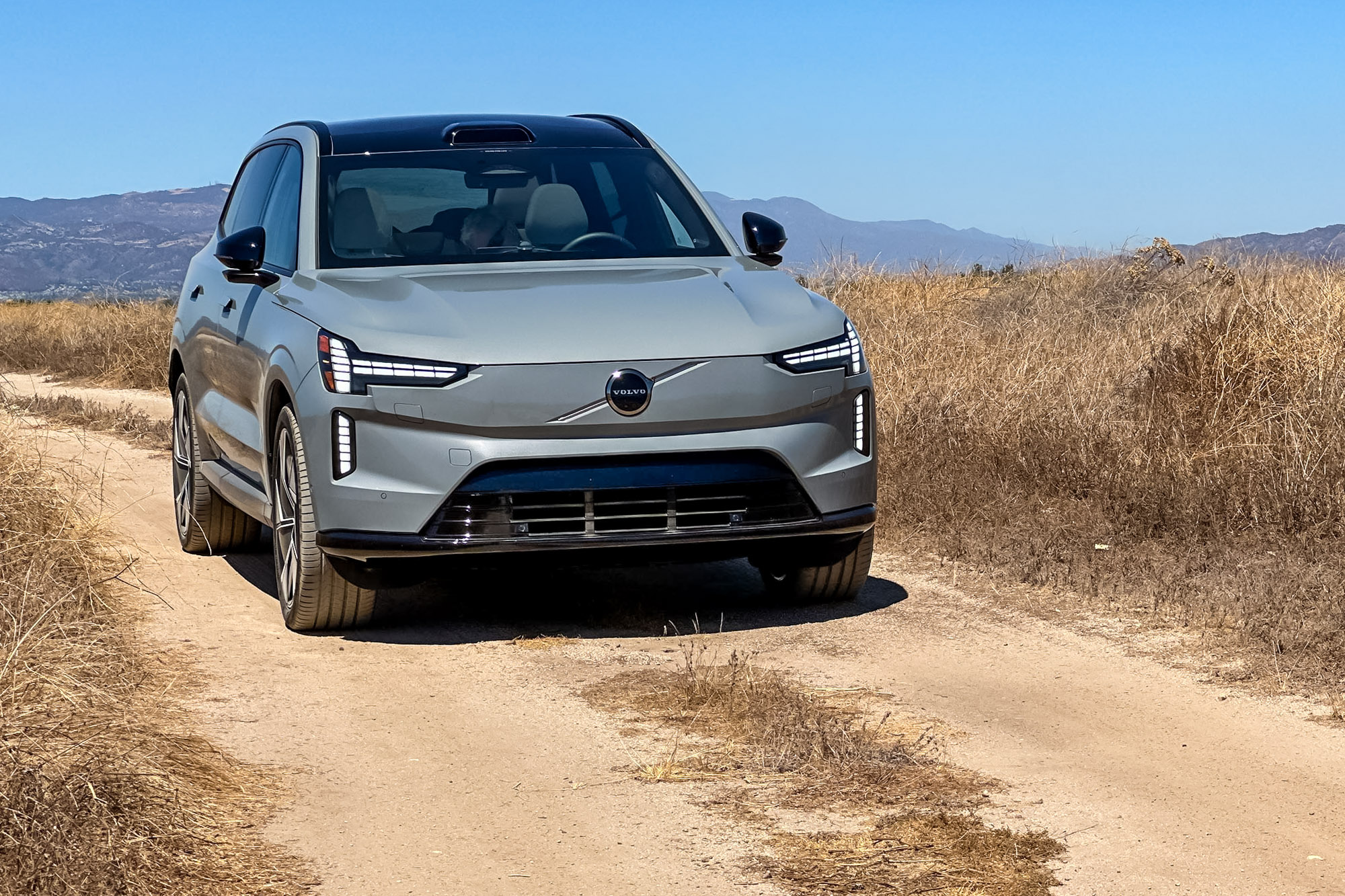
The layout doesn’t prove as advantageous as one might expect for passengers. To start with, the 2025 Volvo Ex90 measures 198.3 inches in total length, stands 66.8 inches in height, and measures 77.3 inches in width. It’s a full 3.3 inches longer than the current XC90 model, the most obvious comparison, but 1.1 inches shorter. The XC90 is also 1.8 inches wider.
When it comes to what matters to passengers, EX90 front-row passengers get 44.2 inches of headroom and 40.2 inches of legroom. For those in the second row, the numbers are 41.6 and 36.5 inches, respectively. All the way in back, the figures stand at 35.8 inches and 31.9 inches.
For the XC90, the front row measures in at 38.9 and 40.9 inches of headroom/legroom. The second row comes in at 38.5 and 37 inches, and the back bench at 36.3 and 31.9 inches, respectively.
Surprisingly, that means that Volvo’s product development team hasn’t achieved quite the benefits of using a skateboard platform as we’ve seen from some other manufacturers. That said, EX90 — like XC90 — does offer reasonably good interior space.
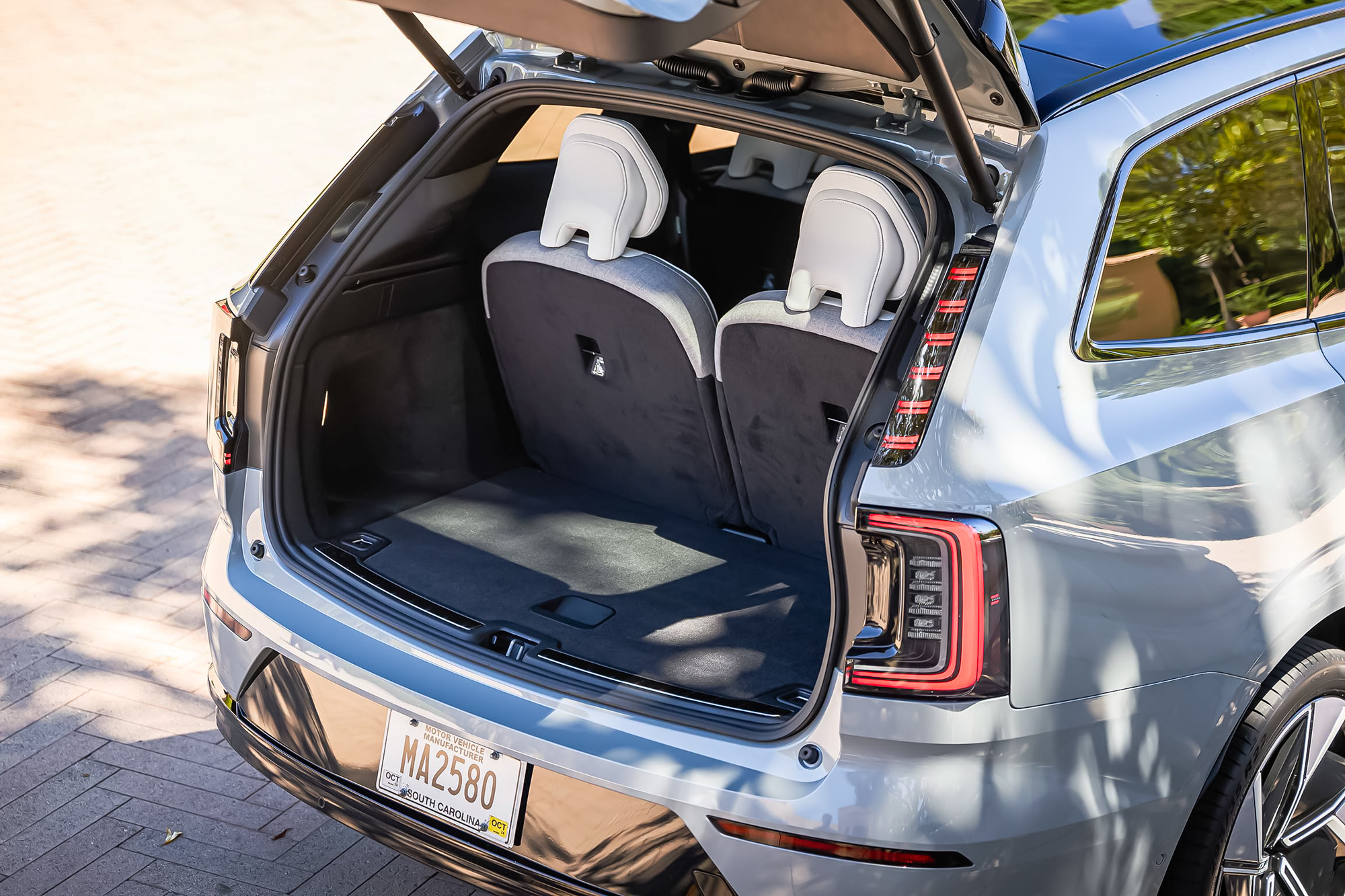
And there’s plenty of cargo space, with all seats up and 11.4 cubic feet in the cargo bay. That jumps to more than 67.6 cubic feet with the second and third rows folded flat — including hidden cargo space.
EX90 Powertrain
A clear advantage of skateboards like SPA2 is the flexibility they offer when it comes to powertrains. In the case of the 2025 EX90, Volvo eventually will offer a mix of layouts, including single- and twin-motor drive.
At launch, look for the “standard” EX90 Twin Motor and Twin Motor Performance options. Volvo places electric motors on both front and rear axles. The Electric Rear Axle Drive, or ERAD, combines a torque vectoring/declutch system that allows the motor to be decoupled when coasting to reduce energy consumption. Under aggressive driving, meanwhile, it can help shift power left or right to enhance steering through tight corners.
I spend my time in California driving the Twin Motor Performance edition, which musters up a hefty 517 horsepower and 617 pound-feet of torque. The standard EX90 Twin Motor package delivers still-impressive numbers at 408 horsepower and 568 pound-feet of torque.
There was no opportunity to run a controlled launch, but my Apple Watch suggested the Performance model was repeatedly hitting 60 in just over 5 seconds.
Another useful number: Volvo rates AWD versions at a towing capacity of 4,850 pounds.
On the Road
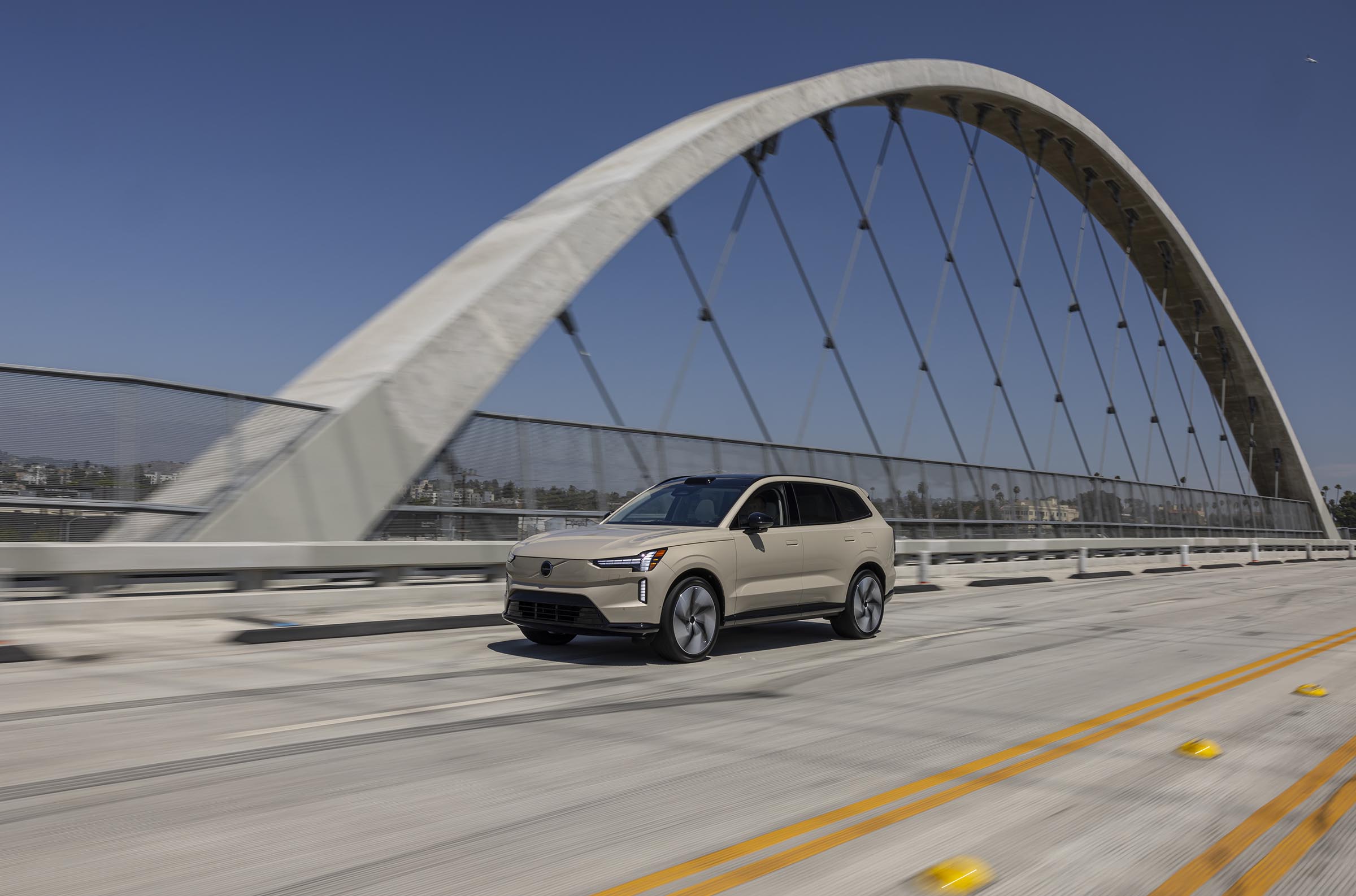
There’s no question the EX90 is quick, but it’s nowhere near the fastest in the segment. Heck, my personal driver, the Ford F-150 Lightning, will hit 60 in just over 4 seconds. But Volvo makes no pretense that its flagship EV will tackle the likes of, say, a Tesla with a Performance or Plaid package. It doesn’t need to.
The Volvo does well when measured in other ways. To start with, even on rough pavement, it remains remarkably quiet inside. Passengers could easily communicate, even when whispering. The cabin is quite comfortable and, as I’ll get to, plushly appointed.
The semi-active air suspension, with its dual chambers, sucks up all but the harshest bumps. I put that to the test during a brief detour through the unpaved fields of a local winery.
Volvo doesn’t purport to call the 2025 EX90 an off-roader, but it would easily get an owner out into the woods for a visit to their country cabin, especially with the nimble powertrain capable of shifting power to wherever it’s needed.
Steering is predictable and offers a reasonable level of feedback, if not quite as direct a sense of the road as I’m used to with the XC90 or some competing products. Overall, the EX90 is pleasant to drive and decidedly refined in its overall manners.
Volvo SUV Design
In silhouette, the similarities between the 2025 Volvo EX90 and the current-generation XC90 are readily apparent — especially, as earlier noted, with them all but sharing the same exterior measurements.
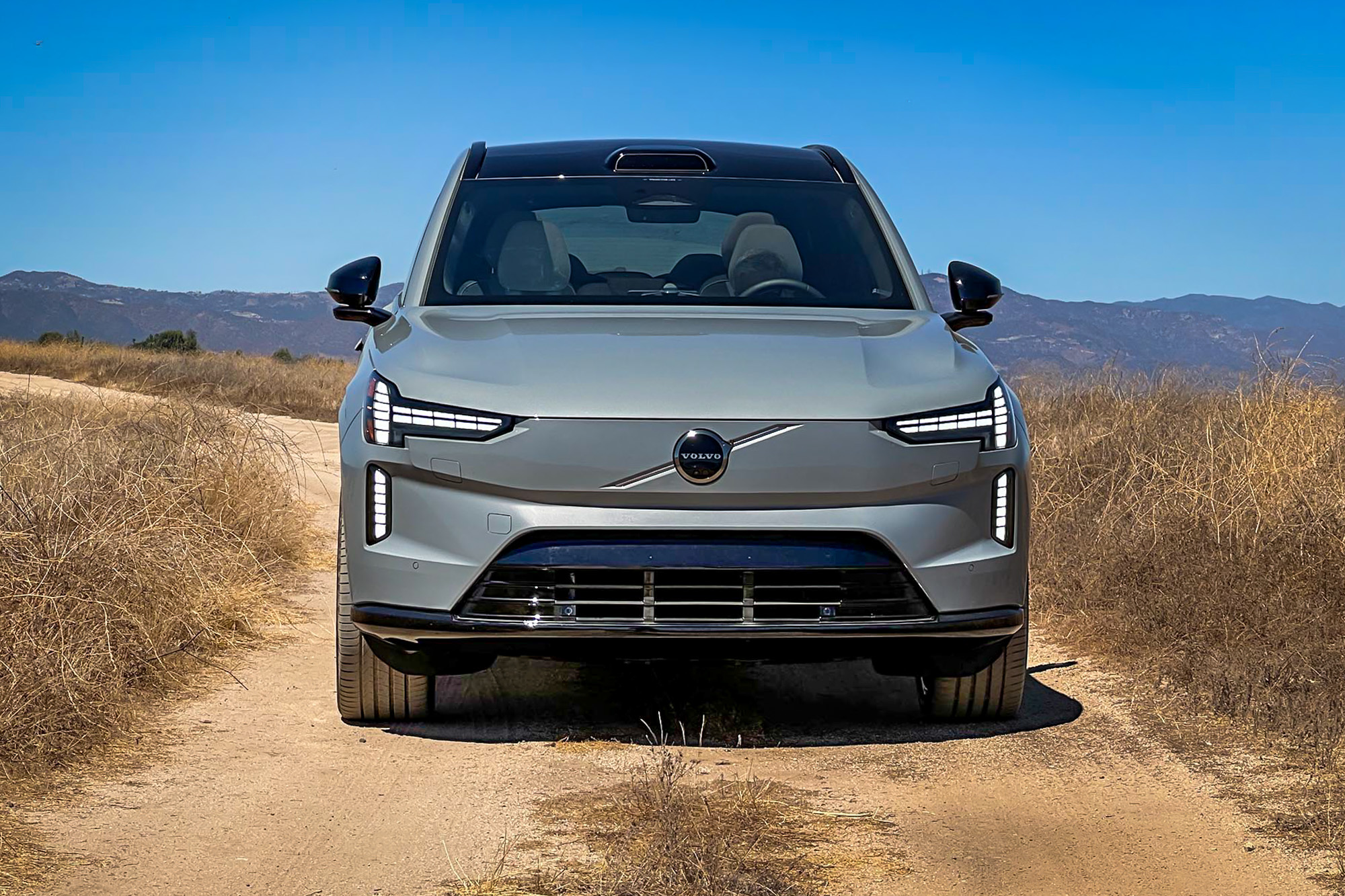
As you’d expect, the all-electric model spent a significant amount of time in the wind tunnel, every little improvement in wind resistance aiding in the hunt for better range. The most obvious indicator is the sealed grille. A traditional one isn’t required since there’s no powertrain to cool under the hood. Smaller air intakes below the front bumper do help chill the battery back, motors, and front brakes.
One of the most distinctive design details comes in the form of a blister above the windshield. That’s where Volvo mounts the EX90’s LiDAR sensor, part of the vehicle’s suite of sensors.
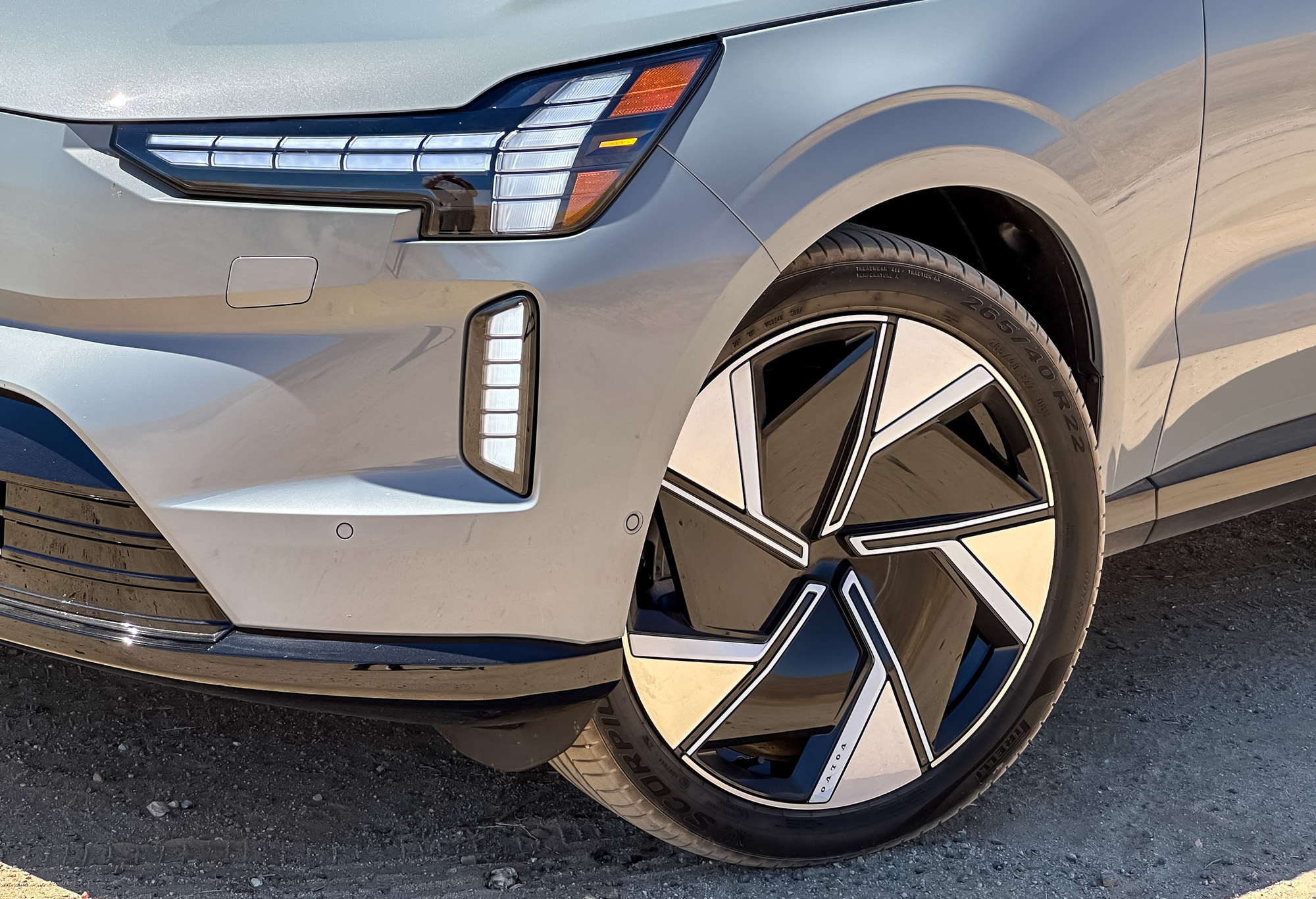
EX90 comes in a broad range of colors and offers buyers a choice of 20-, 21-, and 22-inch tires, depending on trim and options.
Interior
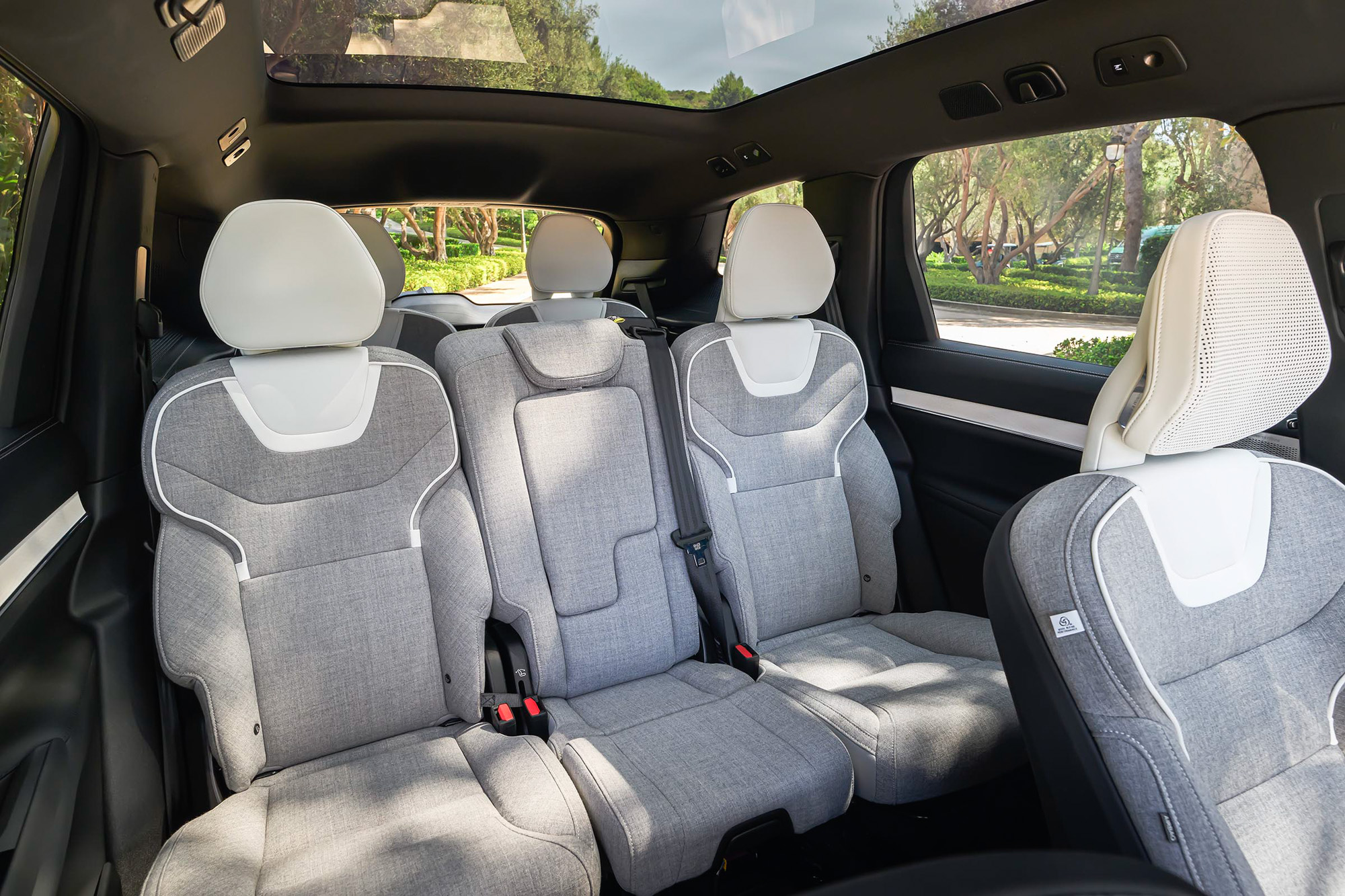
The new EV hews close to the decidedly Scandinavian design language we’ve seen on other recent Volvos — simple but elegant — while adding environmentally friendly touches that are appropriate for an all-electric flagship. The interior materials emphasize sustainability, with options such as gray tailored wool and a leather alternative made from vinyl and pine oil.
The cabin is, of course, decidedly high-tech — for better or for worse — as I realized in a running debate with my co-pilot. In contrast to the spartan EX30, the flagship EV does have somewhat of a traditional gauge cluster, rather than requiring a driver to divert their gaze to a corner of the infotainment screen. There’s a 9-inch display mounted atop the steering column. A vertically oriented, 14.5-inch touchscreen rises out of the center stack for infotainment duties.
Why? Why? Why?
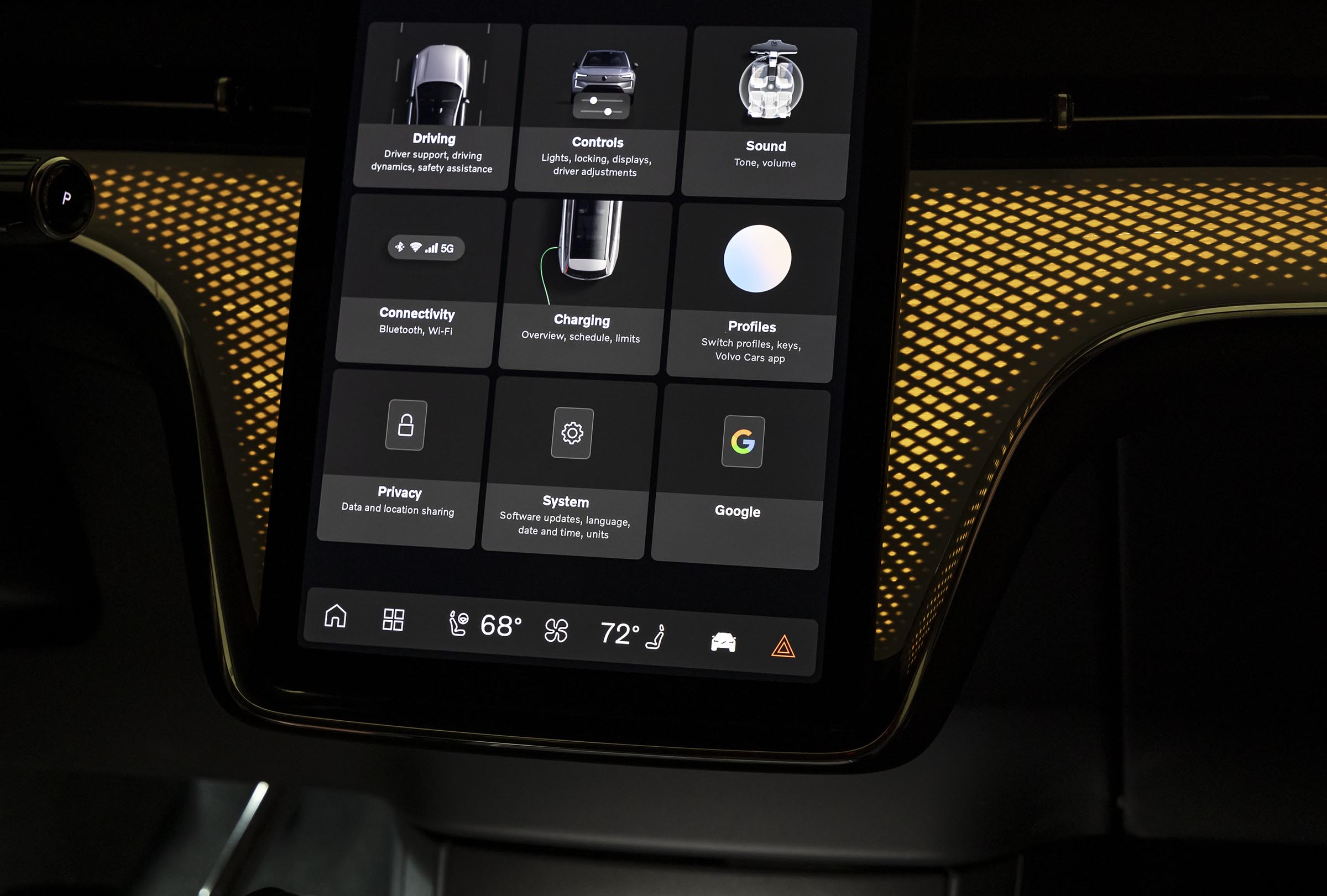
Here’s where I have problems. Like Rivian, Lucid, and a few other companies, Volvo has moved virtually everything you might want to control onto that tablet-sized display. It’s generally acceptable, but I simply find it counterproductive to require motorists to tap and scroll before they can adjust sideview mirrors and the position of the steering wheel.
Then, you have to use the multifunction control on the right side of the steering wheel before they can make those adjustments. Volvo, it was so complex that my co-pilot asked me to pull over first as I struggled to make a minor tweak to one of my mirrors.
Add the fact that Volvo adopted the same silly way for the driver to control all four windows. There are just two conventional switches, with a third used to choose between front and rear windows. I wound up making far more movements than I would have with four conventional switches.
Volvo, take a tip from Hyundai, which has added a classic control panel to the Ioniq 5 for climate settings. Call your friends at VW, Lucid, and Rivian to learn that even high-tech motorists really like conventional window, mirror, and steering wheel controls. Hopefully, Volvo will make some mid-cycle tweaks — one senior planner admitting they’re getting some harsh feedback about the window controls even before the EX90 officially goes on sale.
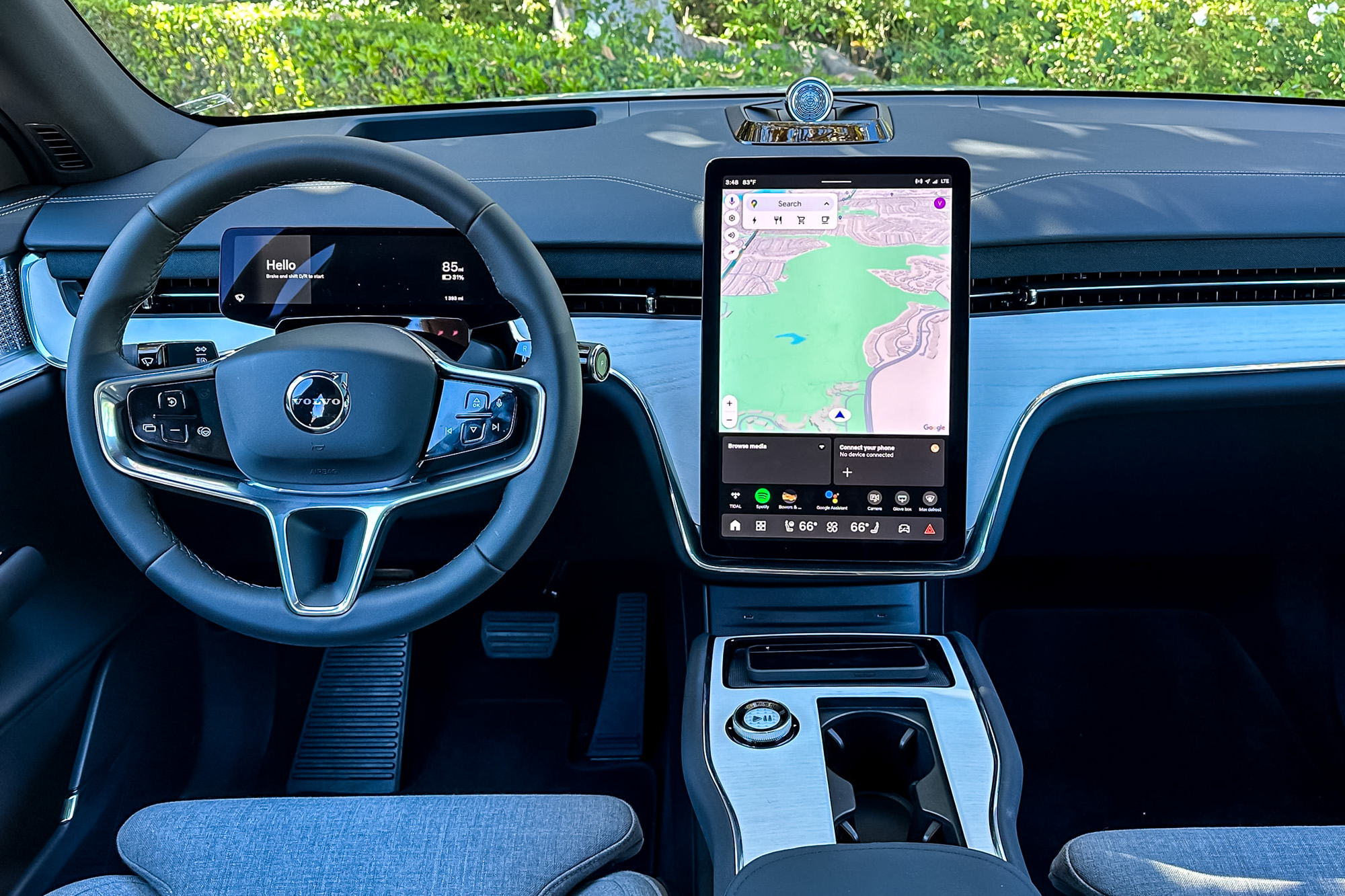
Range, Regen, and Charging
All versions of the 2025 Volvo EX90 come with a 111kWh lithium-ion battery pack — of which 107 kWh is normally usable. That provides enough power with the twin-motor packages to go 310 miles (on 21-inch wheels) between charges, according to the EPA. Of course, range varies depending upon weather conditions and driving style, as well as how much time you spend on either city or highway driving.
Stop-and-go driving actually tends to yield better range, in part, because the EV’s regenerative brakes recapture energy normally lost while slowing or coasting, sending it back to the battery pack. The system also allows for One-Pedal Driving. This allows for more aggressive regen.
There are two options: automatic, which adjusts the level of regen according to road and driving conditions. I preferred to leave One-Pedal in always-on mode. In many situations, this allowed me to slow and even come to a complete stop without ever having to move from throttle to brake pedal. That said, I’d like even more aggressive regen braking than what EX90 offers.
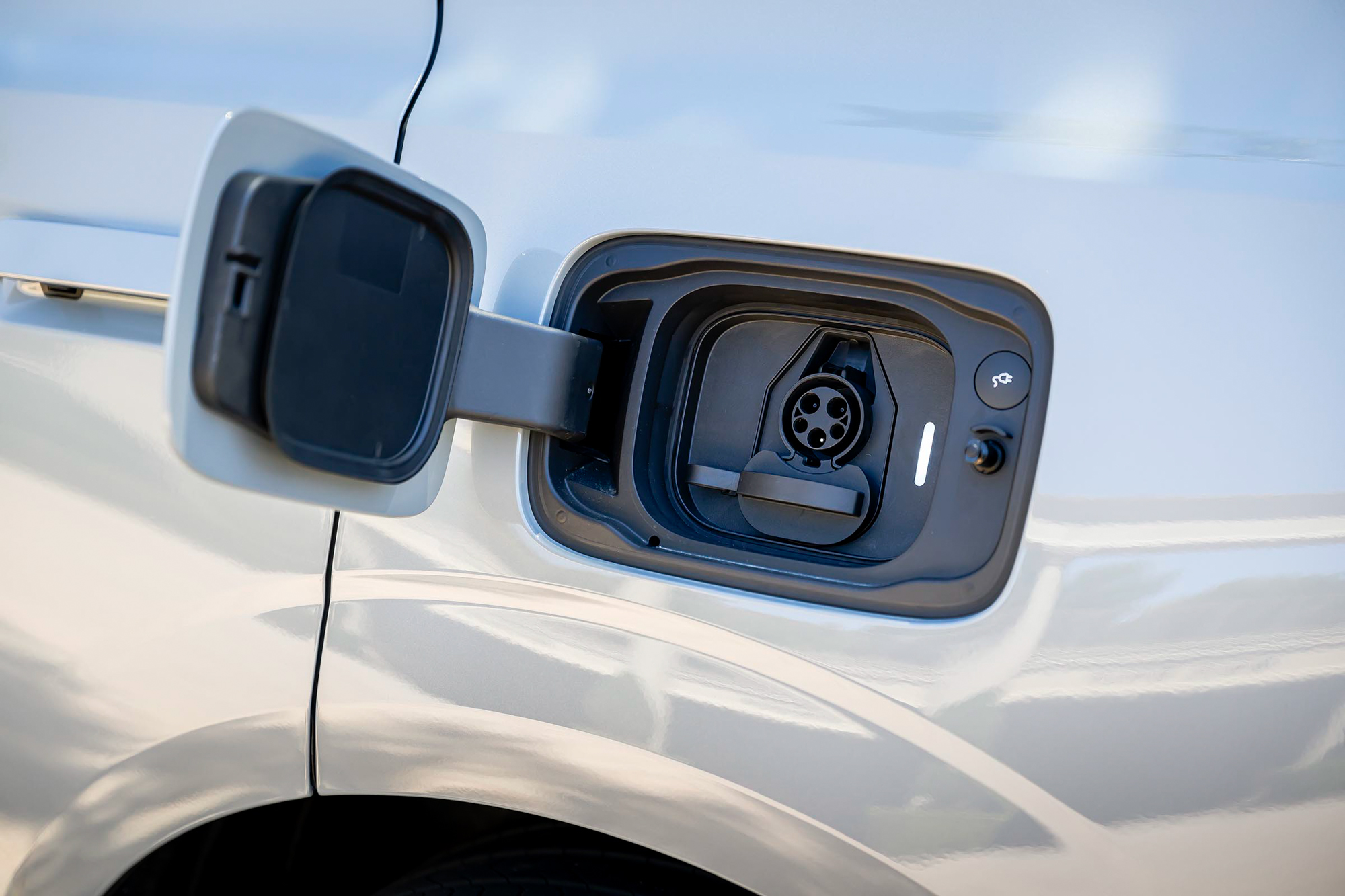
As to charging, times vary depending on what sort of charger you’re plugging into:
- 10-80% 250 kW DC charger: est. 30 min.
- 10-80% 50 kW DC charger: est. 92 min.
- 0-100% 240V AC Level 2 charger @ 48 amps: est. 10 hrs.
- 0-100% 240V AC Level 2 charger @ 32 amps: est. 15 hrs.
Safety & Driver Assistance Tech
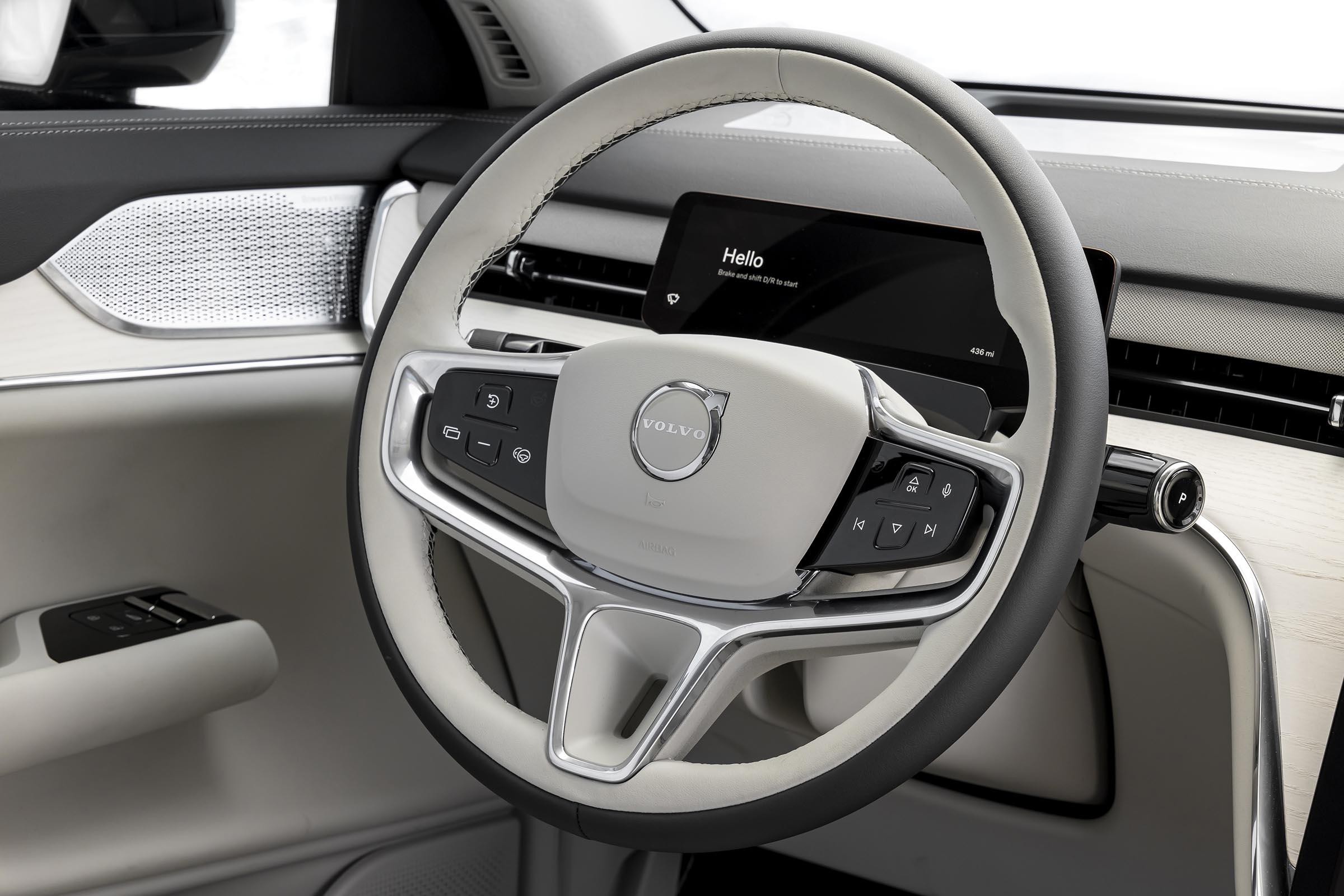
The 2025 Volvo EX90 is loaded with all sorts of useful technology, starting with its Bowers & Wilkinson 25-speaker audio system. I could imagine myself leaning the seat back while parked in my driveway, pulling up a blanket as my favorite tunes play. It’s simply better than the system I have at home.
And the car comes with a built-in app for the super-high-fidelity Tidal streaming service. But you can use the new Google-based infotainment system to access all your own streaming apps via Bluetooth or the built-in 5G connectivity.
There’s also wireless Apple CarPlay and Android Auto, access to Amazon’s Alexa, a smartphone charger, and numerous USB ports.
But this is, of course, Volvo. And it lives up to expectations with one of the broadest suites of digital safety and advanced driver assistance technologies you’ll find in any vehicle. That includes Volvo’s Pilot Assist. In EX90, it adds the ability to change lanes simply by tapping the turn signal stalk.
Another surprise: However, Volvo has yet to go fully hands-free, unlike rivals such as Cadillac and Lincoln, with their Super Cruise and BlueCruise systems. That surprised me considering EX90 is one of the few vehicles now on the road to add a LiDAR unit, which significantly enhances the capabilities of more familiar radar and camera sensors. Hang tight, several officials said, hinting that capability could be added later using smartphone-style over-the-air software updates.
2025 Volvo EX 90 Review Wrapup
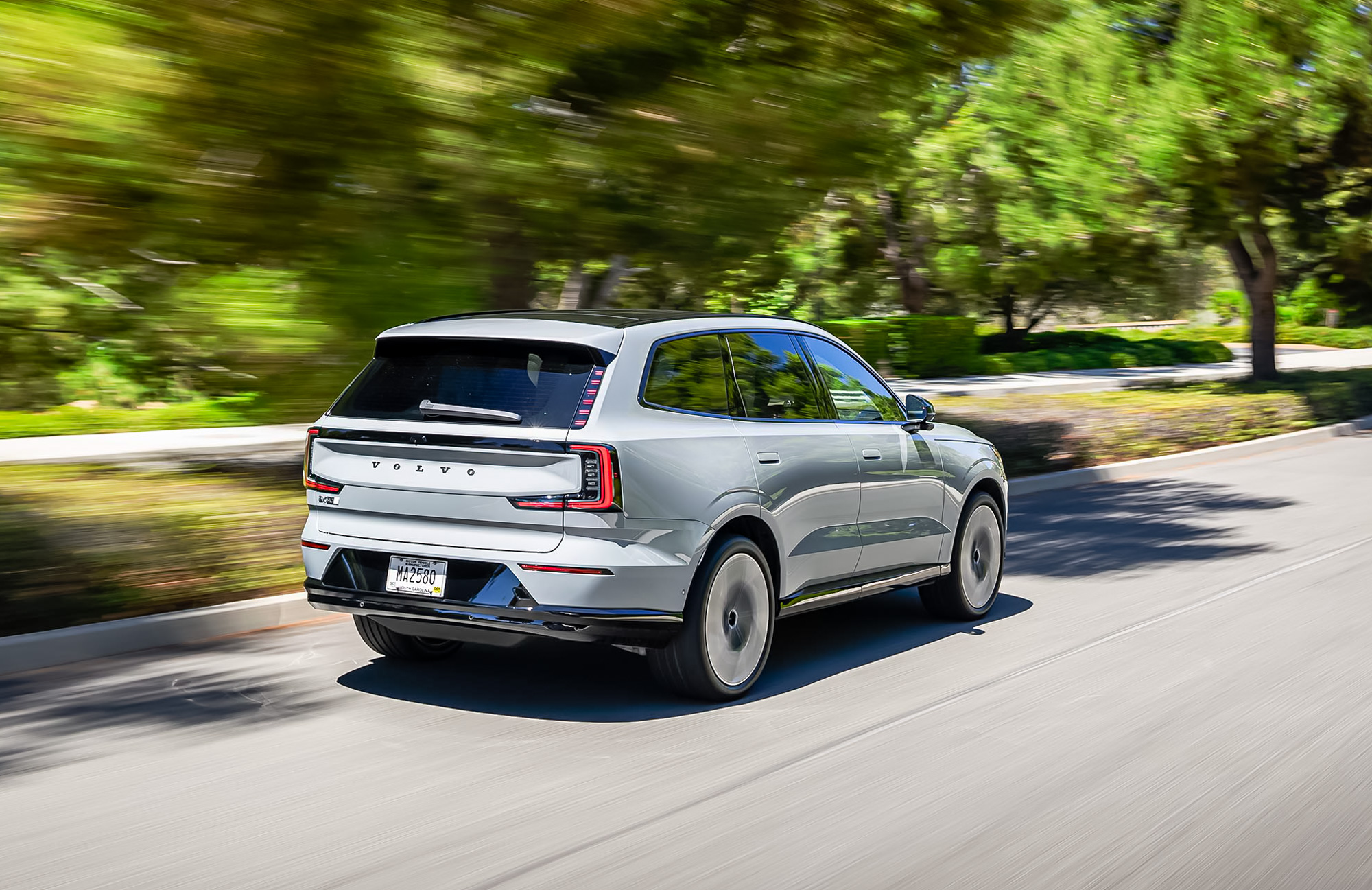
Technically, the EX90 is Volvo’s second dedicated battery-electric vehicle — though it is the first to reach the U.S.. The automaker delaying sales of the base EX30 model to shift production to Europe to avoid new tariffs the White House has enacted on Chinese-made EVs.
In some ways, this may be a stroke of good luck. True, there are more potential buyers for “affordable” EVs, but the EX30 isn’t going to be delayed for long. And the EX90 shows off everything Volvo is capable of delivering in a battery-electric vehicle. A lot, I would declare, despite my few grumbles.
As for pricing, the Standard EX90 Twin Motor package starts at $79,995 in Plus trim and $84,345 for the Ultra trim. The Twin Motor Performance model starts at $84,995 in Plus trim and $89,345 for the Ultra.
If you’re looking to buy one, the order bank for the 2025 Volvo EX90 is now open, and you can configure one online. For now, your choices are limited but still more trims and powertrain options will follow, likely for 2026. Look for the first of the all-electric SUVs to reach U.S. showrooms “later this year,” according to a Volvo spokesman.
